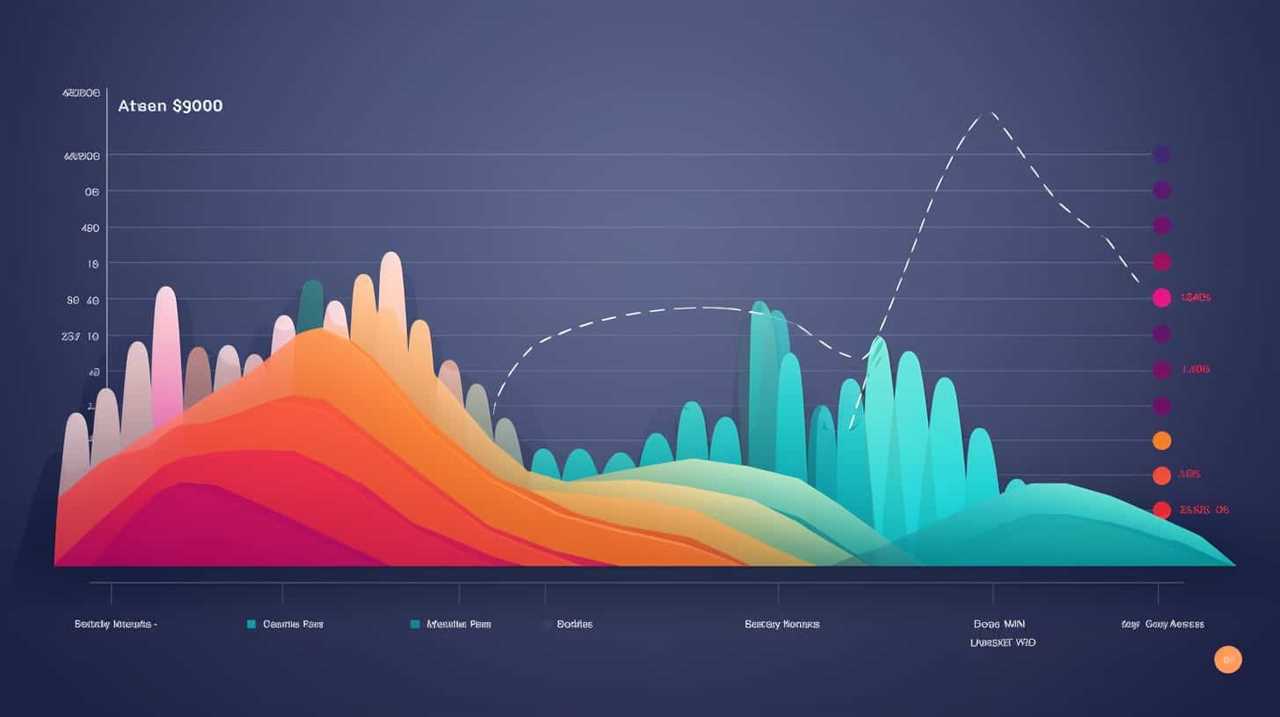It’s a widely recognized truth: 75% of users refrain from exploring past the initial page of search results.
So, how do we ensure our websites make it to that coveted top spot?
The answer lies in technical SEO. By optimizing website speed, improving mobile responsiveness, and ensuring crawlability and indexability, we can lay a solid foundation for search engine success.
Join us as we explore the precise strategies and techniques involved in mastering the art of technical SEO.

Key Takeaways
- Technical SEO optimization focuses on factors like website speed, mobile-friendliness, crawlability, and indexability.
- Website speed optimization involves implementing caching techniques, optimizing images, minifying CSS and JavaScript files, and utilizing a Content Delivery Network (CDN).
- Mobile responsiveness and optimization are crucial for a seamless user experience and improved search rankings.
- On-page optimization, crawlability, and indexability are important aspects of technical SEO and involve techniques like creating a clear site structure, optimizing robots.txt file, resolving crawl errors, and implementing redirects and canonical tags.
Understanding Technical SEO
To understand technical SEO, we need to start by examining the various components and strategies involved in optimizing a website for search engines.
Technical SEO optimization refers to the process of improving a website’s technical elements to enhance its search engine visibility and performance. It focuses on factors such as website speed, mobile-friendliness, crawlability, and indexability.
Technical SEO best practices involve implementing techniques like XML sitemaps, canonical tags, and structured data markup. These practices aim to ensure that search engines can easily access and understand a website’s content.
Another crucial aspect of technical SEO is website architecture and URL structure, which should be organized and optimized for both search engines and users.

Website Speed Optimization
We can optimize website speed by implementing various strategies and techniques. Here are four key ways to improve website speed:
- Website Caching: Implementing website caching techniques, such as browser caching and server-side caching, can significantly improve website performance. Caching allows for the storage and retrieval of frequently accessed data, reducing the need for repeated requests to the server.
- Image Optimization: Optimizing images by compressing them without compromising quality can help reduce the file size and improve loading times. Techniques like resizing images, using the appropriate file format, and lazy loading can further enhance website speed.
- Minifying CSS and JavaScript: Minification involves removing unnecessary characters and spaces from CSS and JavaScript files, reducing their size. This optimization technique helps to improve website speed by reducing the time it takes for these files to load.
- Content Delivery Network (CDN): Utilizing a CDN can distribute your website’s content across multiple servers globally, reducing the physical distance between users and your website’s server. This can result in faster loading times for users in different geographical locations.
By implementing these strategies, we can significantly enhance website speed and provide a better user experience.
Now, let’s move on to the next topic: mobile responsiveness.
Mobile Responsiveness
Mobile responsiveness is crucial in today’s digital landscape. It not only ensures a seamless user experience across different devices but also impacts search rankings.

When a website is optimized for mobile, visitors can easily navigate, read content, and interact with the site, leading to higher engagement and conversion rates.
Additionally, search engines prioritize mobile-friendly websites, making mobile responsiveness a vital aspect of technical SEO.
Importance of Mobile Optimization
The importance of mobile optimization lies in its ability to enhance the user experience and improve website performance. In today’s digital landscape, where mobile usage has surpassed desktop, it’s crucial for websites to adopt a mobile-first approach.
Here are four reasons why mobile optimization is vital:

- User satisfaction: Responsive design ensures that your website adapts to different screen sizes, providing a seamless browsing experience for users on any device.
- SEO benefits: Google favors mobile-friendly websites in search rankings, making mobile optimization a critical factor for improving visibility and driving organic traffic.
- Faster load times: Mobile optimization reduces page load times, decreasing bounce rates and increasing user engagement.
- Higher conversion rates: A mobile-friendly website increases the likelihood of users taking desired actions, such as making a purchase or filling out a form.
User Experience Considerations
One important consideration for enhancing user experience on mobile devices is ensuring that websites adapt seamlessly to different screen sizes. Design considerations and accessibility standards play a crucial role in creating a mobile-responsive website. By following these guidelines, we can ensure that users have a consistent and enjoyable experience across all devices.
To illustrate the importance of mobile responsiveness, let’s consider the following table:
| Screen Size | Design Considerations | Accessibility Standards |
|---|---|---|
| Small | Clear and concise layout | Large font size for easy reading |
| Medium | Fluid design for optimal viewing | High color contrast for better visibility |
| Large | Intuitive navigation for effortless browsing | Voiceover compatibility for visually impaired users |
Impact on Search Rankings
Improving mobile responsiveness positively impacts search rankings. Here are four reasons why this is the case:
- User experience: Mobile responsiveness ensures that your website is easy to navigate and view on different devices, enhancing the overall user experience. This is a crucial factor in search engine algorithms, as search engines prioritize websites that provide a positive user experience.
- Increased visibility: Mobile-friendly websites have a higher chance of appearing in mobile search results, as search engines recognize the importance of catering to the growing number of mobile users. This improves your website’s visibility and increases the likelihood of attracting organic traffic.
- Lower bounce rates: When a website isn’t mobile responsive, users are more likely to leave the site quickly, resulting in high bounce rates. Search engines interpret high bounce rates as a sign of poor user experience, which can negatively impact search rankings.
- On-page optimization: Mobile responsiveness is an important aspect of on-page optimization. By ensuring that your website is mobile-friendly, you’re optimizing it for both search engines and users, improving your chances of ranking higher in search results.
Crawlability and Indexability
To ensure effective technical SEO, we must prioritize the crawlability and indexability of our website.

Crawlability improvements involve making our website easily accessible for search engine bots to crawl and index. This can be achieved by creating a clear and logical site structure, using XML sitemaps, and optimizing our robots.txt file. We should also focus on resolving any crawl errors such as broken links or inaccessible pages.
Indexability challenges, on the other hand, refer to the obstacles that prevent search engines from properly indexing our website. These challenges can arise from duplicate content, canonicalization issues, or poor URL structure. To address indexability challenges, we need to implement proper redirects, canonical tags, and optimize our URL structure.
Site Architecture and URL Structure
In order to address the crawlability and indexability challenges discussed earlier, we need to carefully consider the site architecture and URL structure of our website. This plays a crucial role in ensuring that search engines can easily navigate and understand our website’s content.
To optimize our site architecture and URL structure, we should follow these SEO best practices:

- Establish a clear and logical site hierarchy: This involves organizing our website’s pages into categories and subcategories, creating a hierarchical structure that makes it easy for both users and search engines to navigate.
- Use descriptive and keyword-rich URLs: Our URLs should accurately reflect the content of the page and include relevant keywords. This helps search engines understand the context and relevance of our pages.
- Keep URLs short and clean: Long and complex URLs can be confusing for search engines and users. We should aim for concise and readable URLs that are easy to remember and share.
- Implement proper URL redirects: If we make changes to our URLs, it’s important to set up redirects to ensure that both users and search engines can still access the content. This helps preserve our website’s rankings and avoids broken links.
HTML and XML Sitemaps
To further optimize our site architecture and URL structure, we should now focus on implementing HTML and XML sitemaps, which play a vital role in improving our website’s crawlability and indexability. HTML sitemaps provide a clear and organized overview of our website’s structure, making it easier for search engine crawlers and users to navigate. XML sitemaps, on the other hand, are specifically designed for search engines and provide important information about our website’s pages, such as the last modified date and priority.
To create HTML and XML sitemaps, we can use various sitemap generators available online. These tools automatically generate sitemaps based on our website’s structure, saving us time and effort. Once the sitemaps are generated, we should submit them to search engines through their respective webmaster tools. This ensures that search engines are aware of our website’s pages and can efficiently crawl and index them.
Here is an example of a table comparing HTML and XML sitemaps:
| HTML Sitemaps | XML Sitemaps |
|---|---|
| Provides an overview of website structure | Designed for search engines |
| Helps users and search engine crawlers navigate | Contains important information like last modified date |
| Can be easily created using sitemap generators | Should be submitted to search engines for efficient crawling and indexing |
Structured Data Markup
Structured data markup offers several benefits for technical SEO.

By implementing structured data, search engines can better understand the content and context of your website, resulting in improved visibility and rankings.
To effectively implement structured data, it’s important to follow certain tips. These include using the appropriate schema markup, ensuring accurate and up-to-date information, and regularly monitoring and testing the markup to ensure it’s working correctly.
Benefits of Structured Data
We have found that implementing structured data markup offers numerous benefits for technical SEO. Here are four key benefits of structured data implementation and Schema.org:
- Enhanced search visibility: Structured data markup provides search engines with more context about your content, making it easier for them to understand and index your website.
- Rich search results: By implementing structured data, you can enhance your search listings with additional information, such as reviews, ratings, and product details. This can increase click-through rates and improve user engagement.
- Improved website performance: Structured data markup can help search engines better understand the structure and organization of your website, leading to improved crawling and indexing efficiency.
- Increased mobile optimization: With structured data, you can optimize your website for mobile devices, ensuring that search engines display your content correctly on smaller screens.
Implementing structured data markup is crucial for technical SEO success. Now, let’s delve into the next section about implementation tips for structured data.

Implementation Tips for Structured Data
One of the key steps in implementing structured data markup for technical SEO is to carefully choose the appropriate schema and markup elements.
Schema implementation is crucial for optimizing rich snippets, which are enhanced search results that provide more information to users.
To ensure effective schema implementation, it’s important to understand the different schema types available and select the most relevant one for your website. This requires thorough research and analysis of your website’s content and objectives.
Additionally, it’s essential to correctly mark up the relevant data using the appropriate schema markup elements. This involves adding specific HTML tags and attributes to your website’s code to provide search engines with clear and structured information.

Technical SEO Audits and Monitoring
Our team conducts technical SEO audits and monitoring to ensure the optimization of our clients’ websites. This process involves a thorough analysis of the technical aspects of a website, identifying any issues that may negatively affect its performance in search engine rankings.
Here are four key aspects that we focus on during our technical SEO audits and monitoring:
- Crawlability and Indexability: We ensure that search engines can easily crawl and index all the pages of a website, identifying any barriers that may hinder this process.
- Site Speed: We assess the loading speed of a website and make necessary improvements to enhance user experience and meet search engine requirements.
- Mobile Friendliness: With the increasing importance of mobile devices, we check if a website is optimized for mobile users, providing a seamless experience across different screen sizes.
- URL Structure and Internal Linking: We analyze the website’s URL structure and internal linking to ensure that it’s well-organized, making it easier for search engines to understand and navigate.
Frequently Asked Questions
How Do I Optimize My Website for Voice Search?
To optimize our website for voice search, we need to understand voice search trends and implement voice search optimization techniques. It’s crucial to analyze user intent, use natural language, and optimize for featured snippets.
What Are the Best Practices for Optimizing Images for Technical Seo?
To optimize images for technical SEO, we recommend employing image compression techniques to reduce file size and improve load times. Additionally, adding descriptive alt tags helps search engines understand the content of the images on your website.

How Can I Improve My Website’s Performance on Mobile Devices?
To improve website speed and ensure a mobile-friendly design, we must optimize image sizes, minify CSS and JavaScript files, enable browser caching, and utilize responsive design techniques. These practices enhance user experience and boost mobile performance.
Are There Any Specific Techniques to Optimize My Website for Local Seo?
To optimize our website for local SEO, we implement various techniques and strategies. These include optimizing Google My Business, creating location-specific landing pages, and ensuring consistent NAP (Name, Address, Phone) information across directories.
What Are the Key Factors to Consider When Choosing a Web Hosting Provider for Technical SEO Purposes?
When choosing a web hosting provider for technical SEO purposes, it is crucial to consider key factors such as web hosting features and technical SEO tools. These factors play a vital role in optimizing your website’s performance and visibility.
Conclusion
In conclusion, technical SEO plays a crucial role in optimizing a website for search engines. By focusing on website speed, mobile responsiveness, crawlability and indexability, site architecture, and structured data markup, businesses can ensure their website is easily discoverable and user-friendly.

As the saying goes, ‘A stitch in time saves nine,’ investing time and effort into technical SEO will pay off in the long run by improving search rankings and driving organic traffic to the website.










